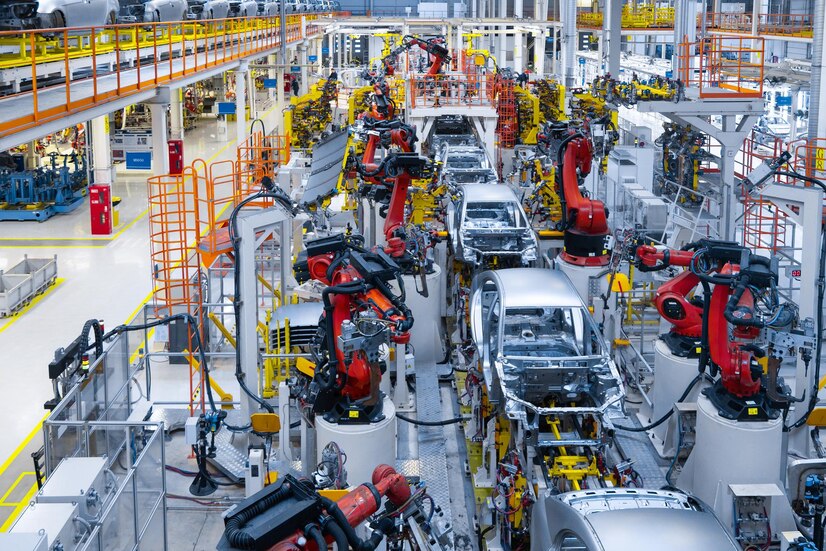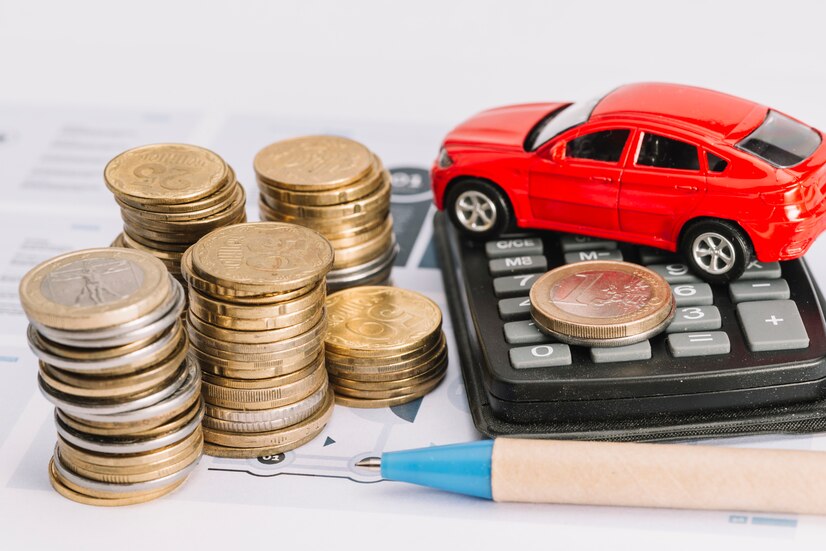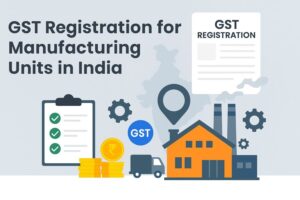GST on Automobile
- 17 Aug 24
- 19 mins

GST on Automobile
Key Takeaway
- GST Simplified the Tax Structure: The introduction of GST replaced a complex array of multiple taxes with a single tax regime, simplifying business operations in the automobile sector.
- Uniform Pricing Across States: GST has standardized automobile prices across India, eliminating the price discrepancies that were prevalent due to varying state taxes.
- Lower GST Rates on Electric Vehicles: To encourage the adoption of environmentally friendly vehicles, electric vehicles (EVs) enjoy significantly lower GST rates, fostering the growth of the EV market.
- Impact on Used Car Market: GST has positively impacted the used car market by implementing lower rates and introducing a marginal scheme, where GST is charged only on the profit margin of dealers.
- Continued Adjustments and Challenges: Despite the benefits, the automobile industry faces ongoing challenges such as adjustments in cess rates and the need for businesses to adapt to new compliance requirements under GST.
The introduction of the Goods and Services Tax (GST) in India was a landmark in the simplification of tax structure across various sectors, including the automobile industry. This uniform tax regime replaced a complex structure of various taxes that were applicable before GST.
Pre-GST Tax Laws on Automobiles
Before the implementation of the Goods and Services Tax (GST) in July 2017, the Indian automobile industry was subject to a multifaceted and complex tax structure. The taxation of vehicles was characterized by a combination of several state and central taxes, which made the system not only cumbersome but also varied significantly from state to state. Here’s a closer look at the pre-GST tax landscape for automobiles:
- Excise Duty: This was a central tax levied on the manufacturing of goods. Automobiles attracted different rates of excise duty based on their engine size, length, and features. For example, small cars generally attracted a lower excise duty compared to larger cars and SUVs.
- Value Added Tax (VAT): VAT was a state-level sales tax. Each state had its own VAT rate, which could vary from 12.5% to 15%, leading to price discrepancies between states. VAT was charged on top of the excise duty, adding another layer to the overall tax burden on vehicles.
- Central Sales Tax (CST): When a vehicle was sold from one state to another, CST was applicable. This tax was in addition to the VAT and excise duty, further complicating inter-state vehicle sales.
- Road Tax and Registration Fee: This tax was charged by the state governments and varied widely from state to state. It was calculated as a percentage of the vehicle's cost.
- Additional Duties: Luxury cars and certain types of vehicles were subject to additional duties, such as a National Calamity Contingent Duty. This duty was imposed on the sale of luxury items, including high-end cars, to fund disaster relief efforts.
- Insurance: While not a tax, insurance is a mandatory requirement and was another cost that needed to be considered in the overall pricing of vehicles.
- Octroi and Entry Tax: Some states and municipalities levied an octroi or entry tax on goods entering their jurisdiction. This was particularly prevalent in states like Maharashtra.
The cumulative effect of these taxes often led to vehicles being significantly more expensive in India compared to other markets. This not only affected consumer choices but also influenced manufacturing and pricing strategies of automobile companies. The introduction of GST aimed to unify this fragmented tax structure into a single coherent system, making it easier to do business and bringing transparency to automobile pricing.
GST Rates on Automobiles

The implementation of the Goods and Services Tax (GST) streamlined the tax system for automobiles by consolidating multiple central and state taxes into a single tax. This shift aimed to create a more transparent and uniform tax structure across India. The GST on automobiles is determined based on the category of the car as well as the type of fuel it uses. Below are the details of how GST rates are applied to different categories of cars and based on their fuel types.
GST on Car Based on Category
GST categorizes cars primarily based on their size and engine capacity, impacting the final cost to the consumers. Here’s how it is structured:
- Small Cars:
- Petrol Engines (less than 1.2 liters) and Diesel Engines (less than 1.5 liters): These cars are generally more compact and are considered more economical. They attract a GST rate of 28%. Additionally, small petrol cars with an engine capacity below 1.2 liters are charged a cess of 1%, whereas small diesel cars with an engine capacity below 1.5 liters have a cess of 3%.
- Mid-Size Cars:
- These cars are typically larger than small cars but do not fall into the luxury category. The GST rate for mid-size cars is 28%, with a cess of 17%.
- Large Cars:
- These include bigger sedans and some of the more spacious and powerful vehicles. Large cars also attract a GST of 28% but with a higher cess of 20%.
- SUVs (Sports Utility Vehicles):
- Characterized by their large size and capacity, SUVs attract a GST of 28%, with the highest cess of 22%.
GST on Car Based on Fuel Type
The type of fuel a car uses also influences the GST rate, especially with the push towards more environmentally friendly options:
- Petrol and Diesel Cars:
- Most petrol and diesel cars fall under the standard 28% GST rate, plus a cess that varies based on the car's size and category as detailed above.
- Electric Vehicles (EVs):
- To promote the use of environmentally sustainable transportation options, electric vehicles benefit from a significantly lower GST rate of 5%, and no cess is applied. This lower rate is part of the government's initiative to encourage the adoption of electric vehicles and reduce carbon emissions.
- Hybrids:
- Hybrid vehicles, which use a combination of electric motors and traditional engines, are typically treated like their non-electric counterparts for GST purposes. They are subject to the standard 28% GST rate plus applicable cess depending on the vehicle’s specifications.
These GST structures reflect the government's broader goals of promoting smaller and more fuel-efficient vehicles, along with fostering the adoption of electric vehicles. This uniform tax rate across states has not only simplified the tax regime but also helped in stabilizing car prices across the country.
💡If you want to pay your GST with Credit Card, then download Pice Business Payment App. Pice is the one stop app for all paying all your business expenses.
GST on Used Cars

The Goods and Services Tax (GST) has also had a notable impact on the market for used cars in India. Unlike new cars, which attract higher GST rates plus cess, used cars benefit from relatively lower GST rates. This distinction was made to foster the growth of organized players in the pre-owned car market and to make used cars more affordable for buyers. Here's how GST affects used cars:
GST Rates for Used Cars
- Petrol and Diesel Cars:
- Small Cars (Petrol and Diesel): Small used cars, both petrol and diesel, are taxed at a GST rate of 12%. This category typically includes hatchbacks and smaller sedans with engine capacities within the limits set for small new cars.
- Other Cars (including larger sedans, SUVs, and other larger vehicles): Larger used petrol and diesel cars attract a slightly higher GST rate of 18%.
- Electric Vehicles:
- Used electric vehicles, continuing to promote environmental benefits, also attract a GST rate of 12%, similar to small petrol and diesel cars. This is significantly lower than the rate for new electric vehicles, which is at 5%, but it still offers a considerable incentive compared to traditional fuel types.
Marginal GST Scheme for Used Cars
To further simplify taxation and encourage the used car market, the Indian government introduced a marginal GST scheme. Under this scheme, GST is charged only on the margin of profit made by the dealer on the sale of used cars. This means:
- If a dealer sells a car for more than it was purchased, GST is applicable only on the difference between the selling price and the purchase price (the margin), not on the entire selling price.
- If there is no profit margin (i.e., the car is sold at a loss or at no profit), then no GST is applied.
This scheme helps in reducing the tax burden on the end consumer and encourages transactions through organized channels, adding to the transparency of the market.
Implications for Buyers and Sellers
For buyers, the lower GST rates and the marginal scheme make purchasing used cars more attractive financially. It also means a broader range of choices, as dealers are encouraged to maintain a diverse inventory without the heavy tax burden.
For sellers, especially dealers in used cars, the marginal scheme means less complex tax calculations and potentially lower taxes payable to the government if they operate on thin margins. This can lead to more competitive pricing and better deals for customers.
Overall, the application of GST to used cars has been designed to stimulate the used car market, make compliance easier for vehicle dealers, and provide financial relief to buyers in India's growing automobile sector.
Impact of GST on the Automobile Industry
The implementation of the Goods and Services Tax (GST) has had significant repercussions across various sectors of the Indian economy, including the automobile industry. The automobile sector, crucial to India's economic growth, has experienced several changes due to GST. Here's a detailed look at the impact of GST on the automobile industry:
Simplification of Tax Structure
Before GST, the automobile industry grappled with a complex tax structure involving multiple levies such as excise duty, VAT, sales tax, road tax, motor vehicle tax, and octroi, which varied from state to state. This complexity not only made compliance challenging but also caused price discrepancies across states. GST has replaced these multiple taxes with a single tax, streamlining the tax administration and making the business operations smoother and more transparent.
Price Standardization Across States
One of the most significant impacts of GST has been the standardization of prices across different states. Pre-GST, a car could cost significantly more in one state than in another due to varying local taxes and levies. With GST tax rates are uniform across states, leading to more uniform pricing of vehicles throughout the country. This standardization has not only simplified the distribution logistics but also helped in fair pricing practices across all vehicle dealers.
Cost Reduction and Pricing
Initially, GST led to a decrease in the cost of vehicles due to the lower effective tax rate on many vehicle categories, especially mid-size to larger cars and SUVs. However, the inclusion of a cess for luxury and larger vehicles somewhat offset these benefits. Over time, the impact on pricing has varied across different segments:
- Small Cars: The tax incidence on small cars increased slightly, making them somewhat more expensive.
- Luxury Cars: Despite the higher cess, the overall tax burden on luxury cars decreased compared to the pre-GST era, leading to a reduction in prices.
- Electric Vehicles: GST has significantly boosted the electric vehicle segment through a substantially lower tax rate, encouraging both manufacturers and consumers to lean towards more sustainable automotive solutions.

Boost to the Electric Vehicle (EV) Sector
The government’s focus on promoting electric vehicles through favorable GST rates (as low as 5%) has provided a strong incentive for both manufacturers and consumers to shift towards EVs. This policy has spurred investment in EV technology and increased the number of electric vehicles offered by manufacturers in India.
Impact on Demand and Sales
The immediate aftermath of GST's implementation saw a mixed reaction in terms of vehicle sales. While some segments saw price reductions leading to increased demand, others experienced a slowdown due to confusion and uncertainty about the new tax system. However, as the market adjusted, sales normalized, and the industry continued to grow.
Compliance and Administration
For the automobile dealers and manufacturers, GST has brought in better mechanisms for claiming input tax credit, reducing the cost of production and operations. The single tax regime has also reduced the administrative burden and simplified the compliance process, allowing companies to reallocate resources to more productive uses.
Challenges and Adjustments
Despite these benefits, the automobile industry has faced challenges, particularly concerning the fluctuating cess rates on certain vehicle categories, which have sometimes led to price adjustments after companies set their initial post-GST prices. Additionally, the transition to the new system required substantial changes to IT systems, accounting, and logistics operations, involving significant time and costs.
Overall, while there have been challenges in transitioning to GST, the long-term benefits of simplified tax compliance, standardized pricing, and support for environmentally friendly vehicles are seen as positive strides for the automobile industry in India.
How GST is Calculated on Vehicles?
The Goods and Services Tax (GST) calculation for vehicles involves a few key components that contribute to the final price that consumers pay. Here’s a breakdown of how GST is typically calculated on vehicles in India:
1. Base Price of the Vehicle
The base price of a vehicle is the cost that includes the manufacturing and profit margin before any taxes are applied. This is essentially the cost of the vehicle as determined by the manufacturer.
2. GST Rate
Vehicles are subject to different GST rates based on their category, which generally includes two main components: a standard GST rate and an additional cess, particularly for luxury vehicles and SUVs. The GST rates on vehicles are primarily categorized as follows:
- Small Cars: 28% GST + 1% cess for petrol engines (up to 1.2 liters) and + 3% cess for diesel engines (up to 1.5 liters).
- Mid-Segment Cars: 28% GST + 17% cess.
- Large Cars: 28% GST + 20% cess.
- SUVs: 28% GST + 22% cess.
- Electric Vehicles: 5% GST, with no additional cess.
3. Calculation of GST and Cess
To calculate the GST and cess on a vehicle, you multiply the base price of the vehicle by the applicable GST rate and cess rate. For instance, if a vehicle has a base price of ₹10,00,000 and falls under the category attracting 28% GST and 20% cess, the GST would be ₹2,80,000 (28% of ₹10,00,000) and the cess would be ₹2,00,000 (20% of ₹10,00,000). The total tax on the vehicle would then be ₹4,80,000.
4. On-Road Price
The on-road price of the vehicle is calculated by adding the base price to the GST and any cess applied. Additionally, this price can also include other charges such as:

- Road Tax and Registration Fees: These are state-dependent and can vary widely. They are calculated as a percentage of the ex-showroom price (base price + GST + cess).
- Insurance Costs: Typically a percentage of the vehicle’s value, calculated on the ex-showroom price.
- Other Charges: These might include logistics, handling charges, or accessories, and are usually a fixed amount.
Example Calculation:
Let’s consider an SUV with a base price of ₹10,00,000, attracting 28% GST and 22% cess.
- Base Price: ₹10,00,000
- GST (28%): ₹2,80,000
- Cess (22%): ₹2,20,000
- Total Tax: ₹5,00,000
- Ex-Showroom Price (Base + Tax): ₹15,00,000
- Road Tax + Registration (Approx. 10%): ₹1,50,000
- Insurance (Approx. 2%): ₹30,000
- On-Road Price: ₹16,80,000
This simplified breakdown provides a good understanding of how GST and related taxes are applied to determine the final cost of vehicles in India, helping buyers to gauge their potential investments better.
Exemptions for GST on Cars
The Goods and Services Tax (GST) system in India typically applies to all goods and services, including cars. However, there are specific exemptions and special considerations under GST for certain types of vehicles or under certain conditions. Here's a detailed look at the exemptions for GST on cars:
1. Electric Vehicles (EVs)
While not fully exempt from GST, electric vehicles benefit from a significantly reduced GST rate as part of the government's initiative to encourage eco-friendly transportation solutions. The GST rate for electric vehicles is set at 5%, substantially lower than the 28% applicable to most internal combustion engine vehicles. This lower rate is aimed at making EVs more affordable to increase their adoption.
2. Vehicles for Special Purposes
Cars and other vehicles specially designed for the physically handicapped are exempt from GST. This exemption is provided to facilitate mobility for disabled individuals at a reduced cost, making specially designed vehicles more accessible.
3. Ambulances
Ambulances are exempt from GST, recognizing their critical role in healthcare and emergency services. This exemption helps healthcare providers and services manage costs more effectively when expanding or updating their fleet of emergency vehicles.
4. Vehicles for Government or Local Authorities
Vehicles purchased by the government or local authorities for official purposes are generally exempt from GST. This exemption applies to vehicles used by government departments and recognized bodies for the execution of their official duties.
5. Other Exempted Categories
Certain other types of vehicles, such as fire trucks and specific types of mobile machinery that are registered as road vehicles, are also exempt from GST. These exemptions are provided typically because these vehicles are not used for private or commercial purposes but are essential for public service or safety.
Application of Exemptions
To apply for an exemption or claim a reduced rate under GST for eligible vehicles, the purchaser must provide valid documentation that supports the eligibility for exemption. This documentation might include proof of disability for handicapped-accessible vehicles or official government orders for vehicles purchased by government bodies.
These exemptions are part of broader policies aimed at supporting sustainable practices, public services, and economic policies that prioritize accessibility and emergency preparedness. Understanding these exemptions can help individuals and organizations make informed decisions when purchasing vehicles under specific conditions that align with GST exemption criteria.
Should You Invest in a Car Now?
Deciding whether to invest in a car involves several factors, including current economic conditions, market trends, personal financial status, and future mobility needs. Here's an analysis to help you determine if buying a car now is a prudent decision:
1. Current Market Conditions
The automobile market often fluctuates based on economic trends, regulatory changes, and technological advancements. For instance, with the Indian government's push towards electric vehicles (EVs) and cleaner technologies, there might be incentives such as reduced GST rates, subsidies, or rebates that can make purchasing an EV more appealing financially.
2. Financial Incentives and Tax Benefits
As discussed earlier, GST on electric vehicles is significantly lower than on traditional petrol or diesel cars. Moreover, there might be additional state or central government incentives for EV buyers. If you're considering an EV, it might be financially advantageous to make the purchase while these incentives are in place.
3. Personal Financial Situation
It's important to evaluate your financial stability before making a major investment like buying a car. Consider your current income, savings, debt levels, and financial commitments. A car not only requires an upfront investment but also ongoing expenses such as fuel, maintenance, insurance, and possibly loan interest. Ensure that these costs comfortably fit into your budget.
4. Fuel Prices and Operating Costs
Fuel prices can significantly affect the operating cost of a car. In times of high fuel prices, running a conventional petrol or diesel car becomes more expensive. On the other hand, EVs, while more expensive upfront, can offer lower running costs. Analyze current fuel trends and consider how they align with your planned vehicle type.
5. Advancements in Automotive Technology
The automotive industry is rapidly evolving, especially with the integration of advanced technologies like autonomous driving, improved battery life for EVs, and enhanced safety features. Buying a car now means you might miss out on forthcoming technological advancements. However, if current technologies meet your needs, this may not be a significant concern.
6. Environmental Considerations
If environmental impact is a concern for you, investing in an EV or a hybrid vehicle might be more appealing. These cars emit fewer pollutants and have a smaller carbon footprint, aligning with global sustainability goals.
7. Resale Value
The resale value of petrol and diesel cars is expected to decline as more cities and countries move towards banning or restricting these vehicles to combat pollution. EVs might hold their value better as demand increases. Consider how long you plan to keep the car and its potential resale value.
8. Lifestyle and Mobility Needs
Evaluate your lifestyle and mobility needs. If you frequently travel long distances or need a vehicle for daily commuting, investing in a car might be necessary. However, if you live in a city with good public transport or you're working from home more frequently, you might defer the purchase.
Conclusion
Whether you should invest in a car now depends on a mix of personal, economic, and environmental factors. If you decide to proceed, consider your needs, budget, and the type of vehicle that best suits your circumstances, keeping in mind the long-term costs and benefits. It's also wise to watch the market for any upcoming models or financial incentives that could offer additional value.
 By
By 

















